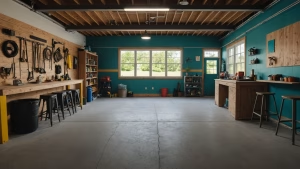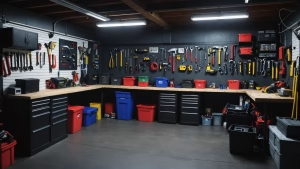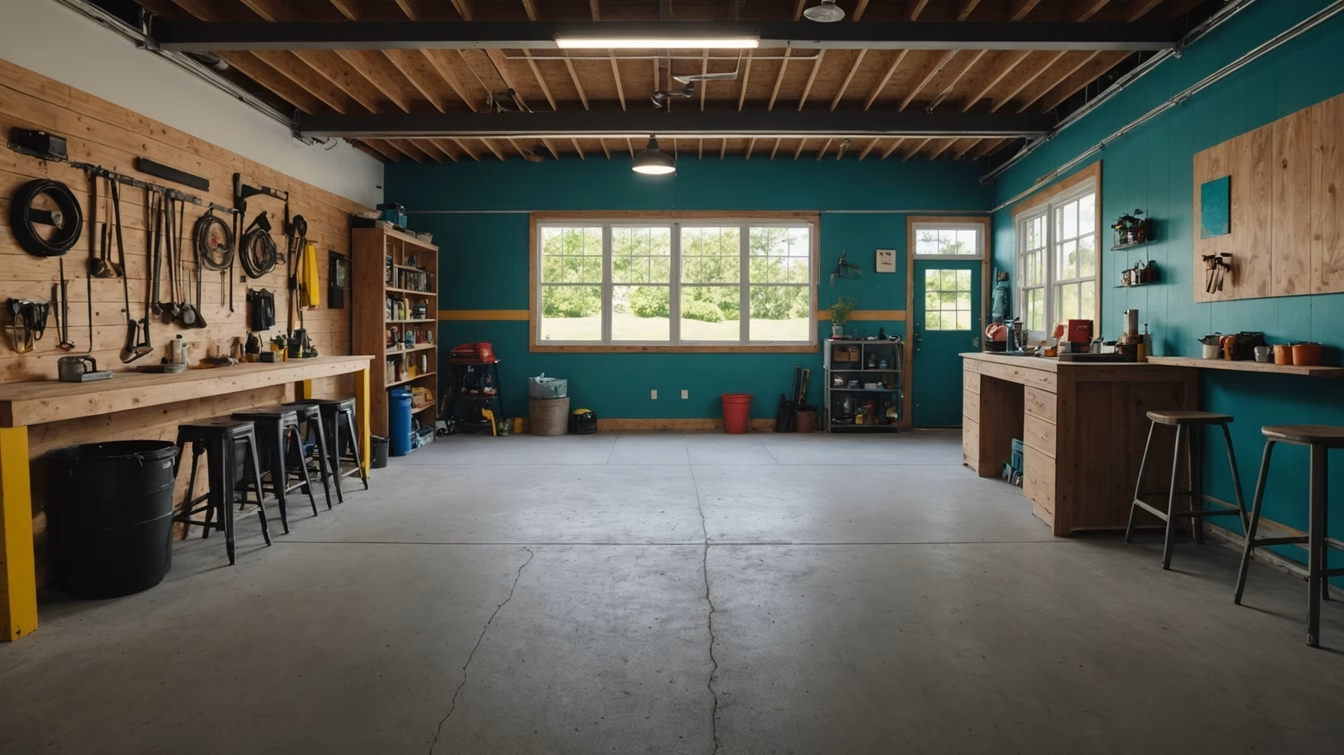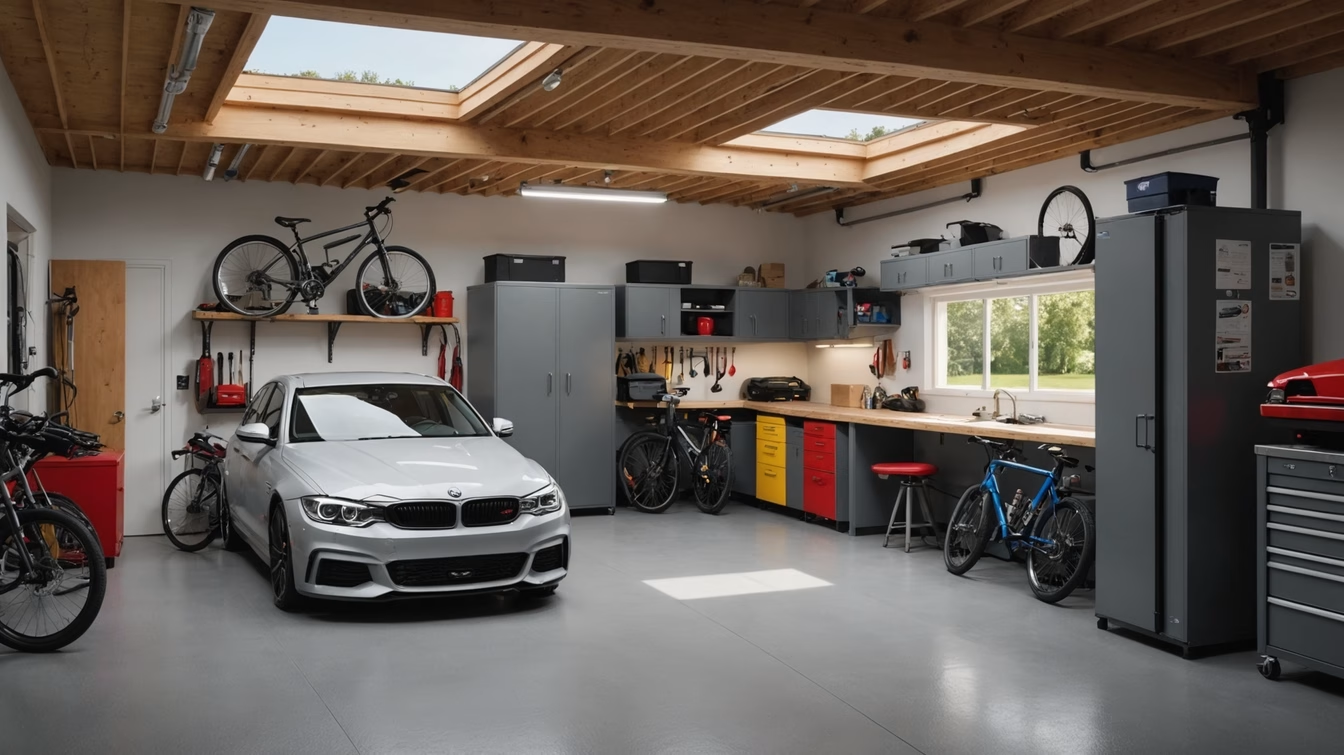Securing your garage is more critical than ever. Often, garages are seen merely as a place to park vehicles or store seldom-used items. However, for many homeowners, the garage acts as an auxiliary entrance to their home and a repository for valuable possessions, from tools and sporting equipment to bicycles and even secondary freezers stocked with food. This makes it a prime target for opportunistic thieves. The good news is that with a few strategic upgrades and consistent habits, you can significantly bolster your garage’s defenses and enjoy greater peace of mind. This comprehensive guide will walk you through actionable steps, delve into common vulnerabilities, and provide practical solutions to safeguard your assets.
The Blink Video Doorbell + Outdoor 4 Camera System is a comprehensive smart home security solution designed for those who want to secure their property with ease and efficiency. This package includes one Blink Video Doorbell, three Outdoor 4 cameras, and a Sync Module Core. It offers wire-free installation or can be connected to existing doorbell wiring, providing up to two years of battery life for minimal maintenance. With a 150-degree field of view and HD infrared night vision, it allows you to monitor activity at your front door day and night.
Understanding the Threat: Common Points of Entry for Thieves
Before we dive into solutions, it’s essential to understand how thieves typically gain access. By identifying these common points of entry, you can better anticipate and counter potential threats.
The Main Garage Door: A False Sense of Security
The largest opening in your garage, the main door, is surprisingly often the weakest link. Many standard garage doors, especially older models, can be compromised relatively easily.
- The Emergency Release Latch: This is perhaps the most notorious vulnerability. Designed for manual operation during power outages, the emergency release cord can be accessed from the outside with a simple hook or coat hanger. A thief can manipulate this cord through a small gap at the top of the garage door, disengaging the opener and allowing them to lift the door manually.
- Weak Materials and Construction: Some garage doors, particularly those made of thinner materials or with less robust construction, can be pried open with enough force. This is less common with modern, reinforced doors but remains a concern for older or poorly maintained installations.
- Remote Signal Interception: While less prevalent with rolling code technology, older garage door opener remotes could, in some instances, have their signals intercepted or “grabbed” by sophisticated devices. This allows a thief to replay the signal and open your door.
Entry Doors to the Home: Overlooked Vulnerabilities
Many garages have a separate entry door leading directly into the house. These doors are frequently overlooked and treated with less security than the main entry doors to the home, yet they offer a direct path indoors.
- Standard Door Locks: Often, these doors are fitted with basic doorknob locks rather than robust deadbolts. A simple bump key, lock pick, or brute force can easily defeat these.
- Weak Door Frames and Hinges: If the door frame is flimsy or the hinges are exposed on the outside (if the door opens outward), a thief can kick in the door or remove the hinge pins.
- Pet Doors and Windows: Small pet doors or windows on these entry doors can provide an access point, either for a small intruder or for manipulating the locks from the inside.
Windows: A Clear Path for Intrusion
Garage windows, especially those that are easily accessible, offer another potential entry point.

- Unlocked or Flimsy Latches: Many garage windows have basic latches that offer minimal resistance.
- Lack of Obscurity: Clear glass allows potential thieves to see valuable items stored within, enticing them to break in.
- Easy Breakage: Single-pane or older glass can be easily shattered, creating an opening.
Fortifying Your Garage: Actionable Security Measures
Now that we understand the vulnerabilities, let’s explore the practical steps you can take to create a formidable defense.
1. Upgrade Your Locks: The First Line of Defense
Locks are fundamental to any security strategy. Don’t settle for the bare minimum.
- For the Entry Door to Your Home:
- Install a High-Quality Deadbolt: This is non-negotiable. Choose a Grade 1 or Grade 2 deadbolt (ANSI/BHMA certification) with a throw bolt at least one inch long. Ensure the strike plate is reinforced with longer screws that penetrate into the wall stud, not just the door frame.
- Reinforce the Door Frame: Consider a door reinforcement kit that strengthens the frame around the deadbolt and hinges. These typically involve steel plates that distribute force, making kick-ins far more difficult.
- Solid Core Door: If your current door is hollow, upgrade to a solid-core or steel door. These are much more resistant to forced entry.
- Security Hinges: If your door opens outward, replace standard hinges with security hinges that have non-removable pins or set screws.
- For the Main Garage Door:
- Manual Locking Mechanisms: Even with an automatic opener, consider adding a manual lock. These can include:
- Side Bolt Locks: These are bolts that slide into holes in the garage door tracks. They offer excellent security but must be manually engaged and disengaged, meaning you can’t use your automatic opener when they’re locked.
- Defensive Bar/Floor Mounts: These involve a sturdy bar that slides into floor-mounted receivers when the garage door is closed, preventing it from being lifted. Again, these are manual.
- Garage Door Lock Kits: These kits integrate with your existing opener and provide additional locking points when the door is closed, often controlled by a keypad or remote.
- Manual Locking Mechanisms: Even with an automatic opener, consider adding a manual lock. These can include:
2. Secure the Emergency Release Latch: Countering a Common Tactic
This is a critical, yet often overlooked, vulnerability.
- Zip Tie the Latch: A simple and effective solution is to secure the emergency release lever to the garage door carriage with a zip tie. The key is to keep it accessible for genuine emergencies but make it harder for a thief to operate with a coat hanger. Ensure the zip tie is snug enough to prevent easy manipulation but can still be cut or broken if you genuinely need to use the release.
- Remove the Cord: If you have reliable power and rarely experience outages, you could consider removing the emergency release cord altogether, though this is generally not recommended for safety reasons without a clear alternative for manual operation.
- Install a Garage Door Shield: Several products on the market are designed to cover the emergency release mechanism, preventing access from the outside while still allowing it to function from the inside.
3. Illuminate and Deter: The Power of Light
Thieves prefer to operate under the cloak of darkness. Good lighting is a powerful deterrent.
- Motion-Sensor Lighting: Install bright, motion-activated lights on all exterior sides of your garage. Position them strategically to cover all potential approach vectors and entry points, including windows and the main garage door. LED lights are energy-efficient and offer excellent illumination.
- Timer-Controlled Lighting: If you’re away for an extended period, consider interior lights on timers to give the impression someone is home.
- Maintain Clear Sightlines: Trim bushes and trees that could provide cover for intruders. Ensure your garage is visible from your home and potentially from a neighbor’s property.
4. Smart Garage Door Openers: Modern Convenience and Security
Technology offers enhanced control and monitoring.
- Wi-Fi Enabled Openers: Upgrade to a smart garage door opener that connects to your home’s Wi-Fi. These allow you to:
- Monitor Door Status: Check if your garage door is open or closed from anywhere via a smartphone app.
- Remote Operation: Open or close the door remotely, which is incredibly useful if you forget to close it or need to grant access to a trusted individual.
- Receive Alerts: Get instant notifications on your phone if the door is opened or left open for too long.
- Rolling Code Technology: Ensure your opener uses rolling code technology. This constantly changes the security code transmitted by your remote, making it virtually impossible for thieves to intercept and reuse the signal. Most modern openers have this feature, but it’s worth checking if you have an older model.
5. Secure Your Windows: Eliminating Vulnerabilities
Don’t let garage windows be an easy way in.
- Frosted or Obscured Glass: Replace clear glass with frosted, textured, or privacy film-covered glass. This prevents thieves from peering inside and seeing your valuable possessions.
- Window Locks: Install sturdy, key-operated window locks or security bars, especially on windows that are easily accessible from the ground.
- Reinforce Glass: Consider applying security film to your windows. This film holds shattered glass together, making it much harder to break through.
- Alarm Sensors: Integrate window sensors into your home security system.
6. General Best Practices: Habits that Enhance Security
Beyond physical upgrades, consistent habits are crucial.
- Never Leave the Remote in Your Car: If your car is parked outside or even inside an unlocked garage, a thief could easily gain access to your remote and, subsequently, your home. Keep your remote with you or in a secure location.
- Close the Door: It sounds simple, but many break-ins occur because the garage door was left open, even for “just a minute.” Make it a habit to close it immediately, even when you’re just stepping out for a moment.
- Lock the Entry Door to Your Home: Even if your garage door is closed and locked, always ensure the interior entry door to your house is also locked. This creates a second barrier.
- Keep Valuables Out of Sight: If your garage windows aren’t obscured, avoid leaving expensive tools, bikes, or other desirable items in plain view. Use covers or store them in opaque containers.
- Inventory Your Belongings: In the unfortunate event of a break-in, having an up-to-date inventory of your valuable items, including serial numbers and photographs, will greatly assist law enforcement and insurance claims.
- Utilize a Home Security System: Integrate your garage into your overall home security system. Door and window sensors, along with motion detectors, can provide immediate alerts.
- Regular Maintenance: Ensure your garage door and opener are in good working order. A noisy or malfunctioning door can be a sign of underlying issues that could compromise security. Lubricate moving parts and inspect cables and springs regularly.
- Community Watch: Get to know your neighbors and participate in neighborhood watch programs. An extra set of eyes can make a significant difference.
The Value Proposition: Peace of Mind and Asset Protection
Investing in garage security isn’t just about preventing theft; it’s about safeguarding your peace of mind and protecting your financial assets.
Protecting Your Valuables
Consider the cumulative value of items typically stored in a garage:
| Category | Example Items | Potential Value (USD) |
| Tools | Power tools (drills, saws, grinders), hand tools, toolboxes, air compressors, welding equipment | $500 – $5,000+ |
| Recreational Gear | Bicycles, golf clubs, kayaks, camping gear, fishing equipment, sports equipment | $300 – $10,000+ |
| Yard & Garden | Lawn mowers, leaf blowers, pressure washers, snow blowers, trimmers, expensive gardening tools | $400 – $3,000+ |
| Automotive | Car parts, spare tires, jack stands, diagnostic tools, car detailing supplies | $200 – $2,000+ |
| Miscellaneous | Storage bins with sentimental items, holiday decorations, secondary refrigerators/freezers with food, antique furniture | $100 – $5,000+ |
| Vehicle (if stored) | Car, motorcycle, ATV | $5,000 – $100,000+ |
As you can see, the value can quickly escalate. A break-in not only results in financial loss but also the inconvenience of replacing items, dealing with insurance claims, and the unsettling feeling of a violated personal space.
Preventing Home Invasion
Perhaps the most critical aspect of garage security is its role as a potential gateway to your home. A compromised garage can provide a thief with a sheltered, unobserved space to work on the interior entry door, greatly increasing their chances of a successful home invasion. By fortifying your garage, you’re adding a crucial layer of defense for your entire household, protecting not just your possessions but also the safety of your family.
Conclusion
Your garage doesn’t have to be a weak link in your home’s security chain. By understanding common vulnerabilities and implementing the actionable tips outlined in this guide, you can transform it into a robust fortress. From upgrading simple locks and securing the emergency release latch to embracing smart technology and maintaining vigilant habits, every step you take adds to your overall defense. Investing in garage security is an investment in your peace of mind, the safety of your loved ones, and the protection of your valuable assets. Don’t wait until it’s too late; take concrete steps today to protect what’s yours.














